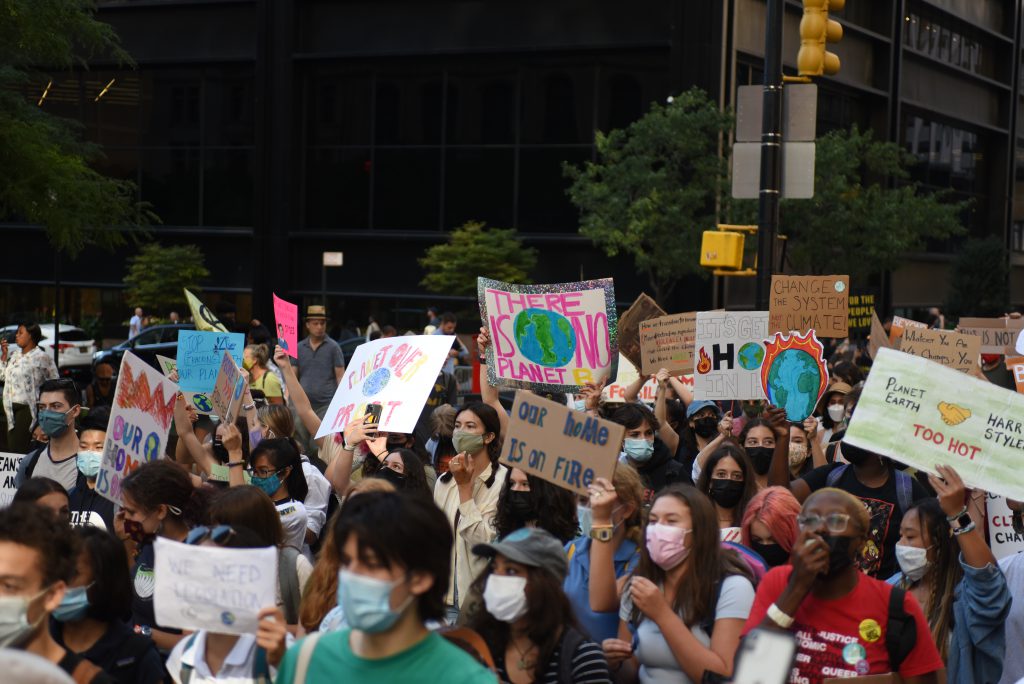My professional experience is very much in the formal development sector, and if you’ve ever been part of this world, you’ll know that results, monitoring and evaluation, and KPIs are part of the daily work. In an effort to know which solutions really work, and to be accountable to donors, a lot of energy and resources are invested in measurement and trying to identify successes. Coming from this world, one of the questions that really interests me within the intersection of activism, digital technology, and development, is how do we measure the “success” of activism in a digitally networked era?
A few years ago I heard someone saying that the Occupy movement had been a failure. I wasn’t very well read up on the subject matter back then, and I couldn’t really respond, but instinctively such a blanket rejection of Occupy felt wrong to me. A failure according to whom, and why? In this blog, I want to propose some angles from which to tackle this question of success or failure.
Is it about the numbers?
Oftentimes when the media report on activism or a social movement they will focus on the number of people who took part in a march or protest, or how many times a hashtag was used. Sometimes, large numbers may be one of the few ways to get mainstream media coverage in an oversaturated media environment.
However, in a digital age, a focus on numbers alone can be misleading. According to Dave Karpf, digital platforms offer a lot of “tactic-level data”, but while these tools make it easy to reach large numbers of people, large numbers do not necessarily mean that the group or movement behind them has what Zeynep Tufekci refers to as ‘capacity’ – the ability to achieve social change. Therefore, looking only at outputs (the number of protestors, the number of tweets) without looking at the underlying capacity producing those outputs can be misleading. It is also not to say that these types of metrics are not useful, but, as Karpf says, “digital activists must be clear about the strategic goals they are pursuing and identify the relevant data accordingly”.

Do demands need to be met?
In development, and often in activism, you must first know what you want to change (though some movements specifically resist having one centralized vision or set of demands) and then develop a plan of how to get there – the targets, the tactics, and the resources needed. Many social movements or activists articulate their demands for change – some are very specific, while others might be broad and complex. Currently, in Brooklyn, New York various local organizations have come together to launch the “No North Brooklyn Pipeline” campaign aimed at stopping the construction of a fracked gas pipeline through several neighborhoods. The target of this campaign is the Governor and government of New York State. In contrast, Fridays For Future, on their global website, outline their demands as: keeping global temperature rise under 1.5C, ensuring climate justice and equity, and listening to the best united science currently available. All three of these are very complex, multilayered demands which target numerous actors and require unpacking. (This is also a good moment to note that large global movements are likely to have more broad demands at the global level which may then be translated into more specific local calls to action). Local or global, for many of today’s activists or movements, garnering public support, oftentimes through digital platforms, is seen as a key tactic towards achieving their stated objectives.
So what happens if the desired demands of a movement fail to happen? What happens if the Brooklyn pipeline goes ahead, or we fail to keep global temperature rise below 1.5C? Does that mean the movement or activism has failed? Strictly speaking, the answer is yes, because they have failed to achieve the desired change. Such a failure to achieve a particular goal generally necessitates an assessment of where and why things went wrong.
However, my personal answer to the question of “has it failed?” is “perhaps, but maybe we need to look at it from a different perspective”. Most activists or movements set out to tackle targets that are often much more powerful and well-resourced than they are (Governments, oil and gas companies, etc.) and the change that is needed is often difficult and requires numerous targets to take action. This is not a case of trying to pick more realistic goals for the movement: many of the problems we face in our world are messy, and there simply are no easy answers.
“Why bother then?”, you might be asking…well this brings me to my last point.
Is it about changing the way people think?
In Twitter and Teargas, Zeynep Tufekci states that “Black Lives Matter has exhibited great narrative capacity and like the Occupy movement’s success in highlighting inequality, it has changed the public conversation.” Even if movements or groups of activists do not manage to bring about specific policy actions or legislative changes, they have the power to change how people think and feel about an issue. To put it more poetically, they have the potential to introduce people to the idea that something different IS possible, that we are not doomed to live within structures that promote inequality and violence.
Even though I could not articulate it a few years ago, this is what made me uncomfortable with the characterization of Occupy as a failure. Although I did not participate in Occupy protests, it was a powerful signal that I was not alone in thinking that our world didn’t need to be this way. Other people shared the same sense of injustice as I did – and they exposed me to ideas and resources that took me from an unfocused feeling of something being wrong and helped me sharpen my understanding and clarify my values and views.
This may sound deeply idealistic, but in my conversations with people on various social challenges, some have resigned themselves to believing that things have always been a particular way (women have always faced violence, people are greedy, etc.) and their motivation to support actions to change this, or to even alter their own behavior, is low. So for me, another way to look at the success of activism or movements is to look at how they and transforming or challenging social norms, values, and perceptions and helping people reimagine a different way of being. In a digitally networked world, activists and movements have more opportunities than ever before to do this by directly communicating with massive numbers of people. Unfortunately measuring and quantifying this is no simple task.
Should we even be concerned with measurement at all?
When I was working on my last blog post I came across a tweet from user @QuoiGender who wrote the following:
"Slacktivism" is a capitalistic abled people bullshit concept that "progressives"/"leftists" should not be perpetuating. Since when are we measuring the productivity of our activism? We do What we can, When we can, Where we can. That is enough. It works because we're a collective https://t.co/Lj8cELG3CN
— Genderquoi | E/Em/Eir/Siya (@QuoiGender) August 26, 2021
The tweet really struck a chord with me, because my professional background has always included such a strong focus on measurement frameworks and KPIs. I am not saying these are never important, however, I do think that when it comes to activism and movements for social change, we need to reflect on our own values and ideologies that underpin the way we assess them. Many movements and activists are fighting for a different way of organizing our societies, and that necessitates a different way of understanding the world around us.
I’d love to hear your thoughts on this topic – how would you measure the success of activism or a movement?


Hi Katia, your article is relevant and interesting, especially the discussion of what is failure and success. I remember me, us demonstrating against Atomic Power Plants in the 1980s, which to that time with all the police beating and criminalising people and more plants planned and built, seemed like a big failure. Today I think of it as a big success, since it “changed the public conversation.” and had “the power to change how people think and feel about an issue….they have the potential to introduce people to the idea that something different”. Yes, the green movement evolved, first as activists and soon as politicians (just negotiating their participation in government these days). At first, an unusual political party, of which people made fun of, the press constantly showed mothers (knitting) and babies at conferences, dressed very informally. The first ‘green’ minister wore sneakers at his swearing in, which kind of symbolised the start of a new era with a new culture. Nowadays, although after Fukushima only, it would absolutely not be possible to even discuss that energy is supplied by Atomic power plants. The big lies about the technology have long been exposed, although the energy companies managed to extract billions of bucks, while undermining the development of alternative energy sources. So, how to measure success and failure? I think what you wrote and I cited above is the only way to measure it long term. Not numbers of likes in Facebook or numbers of cryptic sentences in Twitter, but creating discussions and reflections, engagement with the topics at best, supporting people who take it further… into politics.
Hi Sabine, wow thank you for sharing that personal experience – it is so interesting how time also plays such a key factor in this and how our perceptions and understanding of the significance can change over time. I am interested in this question of social movement/activism being carried into politics. Do you think that that comes with the risk of issues losing their “teeth” so to speak or being co-opted? Does activism have to translate into the political sphere to be effective? I think that probably depends a bit on the issue or challenge at hand – certainly without policy/legislation, certain problems can never be addressed (like nuclear proliferation), whereas others probably equally rely on political and social change.
Hi Kasia,
Such an interesting reflection! I’ve been working in the communications field for a decade, but not exactly in the development sector. However, KPIs and success seem trending topics wherever we land in…
From my point of view, the key in this case would be the human and environmental factor. Success, if thinking in these two fields, is not about quantity but about quality. I believe that one of the most relevant aspects of communications for social change (no matter if take to term by individuals or formal organisations) is the mere fact of raising awareness. Although he most part of the times, it implies long-term results.
In my opinion, it’s important to search for balance and present tangible and qualitative results (testimonials, highlighted mentions on traditional media, meetings celebrated as result of a campaign…), instead of cold and decontextualised numbers. As communicators, let’s not forget that we have storytelling on our side! Not only for developing strategies, but also for showcasing their results.